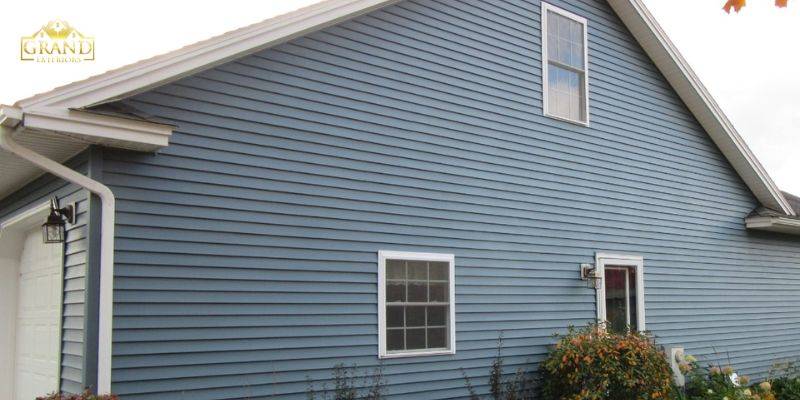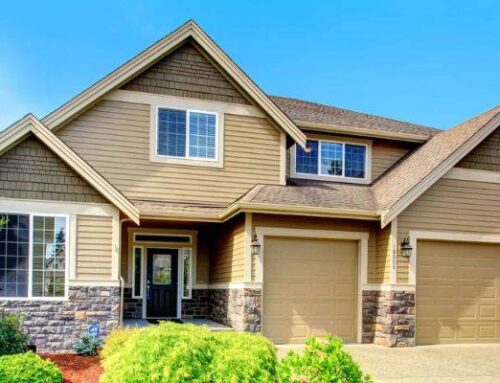How to extend the lifespan of home siding? This is one of the most common questions that come into the mind of every homeowner. Your home’s exterior is its first line of defense against the elements, and residential siding plays a crucial role in protecting your investment.
Proper maintenance is essential to ensure the longevity and aesthetic appeal of your siding. In this blog, we’ll share Minneapolis siding maintenance tips to help you maintain and extend the lifespan of your home’s siding.
Regular Cleaning is Essential
One of the simplest yet most effective ways to maintain your siding is through regular cleaning. Use a soft-bristle brush or a low-pressure power washer to remove dirt, dust, and mold. Pay special attention to areas prone to moisture, as mold and mildew can compromise the integrity of your siding over time.
Cleaning your siding regularly helps prevent the buildup of dirt, grime, and mildew, which can compromise its appearance and structural integrity. However, avoid using harsh chemicals or abrasive materials that can damage the siding material or strip away protective coatings.
Pay special attention to areas where dirt and moisture tend to accumulate, such as along the bottom edge of the siding and near landscaping features. In short, regular cleaning is one of the best practices for maintaining house siding.
Trim Overhanging Trees
Overhanging branches can cause damage to your siding, especially during storms. Trim any branches that come into contact with or cast shade on your siding. This not only prevents physical damage but also reduces the risk of mold growth by allowing more sunlight and airflow.
Trim back trees, shrubs, and other vegetation near your home to prevent them from rubbing against or leaning on your siding. Prune overhanging branches to minimize debris accumulation on your siding and reduce the risk of damage during storms or high winds.
Maintain a clearance of at least several feet between vegetation and your home’s exterior to allow for proper airflow and prevent moisture retention.
Seal Gaps and Joints
With the ever-soaring cost of siding replacement in Minneapolis, it’s essential to address the minor issues and enhance the life of your siding. Inspect the seams, gaps, and joints in your siding for any signs of wear or separation.
Apply caulking or weather-stripping to seal gaps and prevent water infiltration. This step is crucial in maintaining the energy efficiency of your home and preventing moisture-related issues.
Protect from Harsh Elements
Extreme weather conditions, such as heavy rain, snow, and direct sunlight, can take a toll on your siding. Consider applying a protective sealant or weather-resistant coating to enhance its durability. This additional layer acts as a barrier against UV rays and moisture.
Consider installing awnings or planting shade trees strategically to avoiding sun damage to siding. UV rays can cause fading, warping, and deterioration of siding materials over time, so minimizing prolonged exposure can help prolong its lifespan.
Keep Gutters Clean
Clogged gutters can lead to water overflow, causing damage to your siding and foundation. Regularly clean your gutters to ensure proper drainage and prevent water from seeping behind your siding. This simple maintenance task can significantly extend the life of your siding.
Ensure that your gutters and downspouts are clear of debris and properly direct water away from your home’s foundation. Extend downspouts away from your home’s foundation to prevent water from pooling near the base of your exterior walls.
Schedule Professional Inspections
While regular homeowner inspections are crucial, consider scheduling professional inspections at least once a year. This is highly recommended if you don’t know how to extend the lifespan of home siding, make sure to take the help of professionals.
Experts know how to inspect siding for damage in Minneapolis. Siding professionals can identify potential issues that may go unnoticed and provide expert recommendations for maintenance and repairs. Even repairing minor siding damage can make a huge difference.
Follow the Manufacturer’s Guidelines
Different siding materials require specific care. Familiarize yourself with the manufacturer’s guidelines for cleaning and maintenance. Whether you have vinyl, wood, fiber cement, or another siding material, following these recommendations can help you preserve its lifespan.
Avoid Pressure Washing Excessively
While pressure washing is an effective cleaning method, excessive force can damage siding materials, especially if they are older or more delicate. Use a low-pressure setting and keep the nozzle at a safe distance to prevent water from getting behind the siding.
Regularly Paint Wood Siding
If your home has wood siding, regular painting is essential for protection against the elements. Ensure that the paint is in good condition, without cracks or peeling. Repaint as needed to maintain a protective barrier against moisture, insects, and UV rays.
UV rays from the sun can cause fading and discoloration of your siding over time. To protect against this, choose siding materials with UV-resistant finishes. Additionally, consider using a quality UV-blocking sealant or paint to maintain the vibrancy of your siding’s color.
Install Ventilation
Proper ventilation is crucial for preventing moisture buildup behind your siding. Ensure that your home has adequate ventilation, especially in areas prone to high humidity. Consider installing vents or a breathable house wrap to allow for proper airflow, reducing the risk of mold and rot.
Protect Against Hail Damage
Depending on your geographical location, hailstorms can pose a threat to your siding. Consider investing in impact-resistant siding materials or installing storm shutters to minimize the risk of hail damage. Inspect your siding after severe weather events to address any potential issues promptly.
Winterize Your Siding
Before the winter season, take steps to protect your siding from cold temperatures, ice, and snow. Ensure that your gutters are clean and free from debris to prevent ice dams. Consider applying a winterized sealant to provide an additional layer of protection against harsh winter conditions.
Apply Protective Finishes
Consider applying protective finishes or sealants to your siding to enhance its durability and resistance to moisture, UV exposure, and other environmental factors. Choose a finish or sealant that is compatible with your siding material.
Follow the manufacturer’s instructions for proper application. Protective finishes can help extend the lifespan of your siding by providing an additional layer of defense against water intrusion, fading, and deterioration.
Keep Pests at Bay
Regularly inspect your siding for signs of pest infestation, such as termites or carpenter ants. Insects can cause significant damage to your siding by burrowing into wood materials. Take preventative measures, such as applying insecticides or using pest-resistant siding materials, to deter unwanted visitors.
Inspect your siding regularly for signs of pest infestation, such as holes, gnaw marks, or nesting activity. Seal any gaps, cracks, or openings in your siding to prevent pests such as termites, ants, and rodents from gaining access to your home.
Prevent Mold and Mildew Growth
Protecting siding from mold and mildew is the key to keeping your siding in immaculate condition. For this purpose, keep vegetation, such as bushes and trees, trimmed back from your siding to allow for proper airflow and sunlight exposure, which helps inhibit mold and mildew growth.
Address any areas of persistent moisture buildup around your home’s exterior, such as near air conditioning units or poorly ventilated spaces, to prevent mold and mildew from thriving on your siding.
Consider Specific Maintenance Requirements of Your Siding Material
Different siding materials require specific maintenance practices to ensure longevity. If you want to understand how to extend the lifespan of home siding, make sure to learn about the maintenance procedure for a specific siding material.
For example, wood siding may need periodic staining or painting to protect against moisture and UV damage. On the other hand, vinyl siding may benefit from occasional washing and inspection for cracks or gaps.
Monitor Caulking and Sealing
Check caulking and sealing around windows, doors, and other penetrations in your siding regularly to ensure they remain intact and effectively seal out moisture and drafts. Repair or replace any deteriorating caulking or sealing promptly to prevent water infiltration.
This could help prevent potential damage to your siding and home’s interior. This is a crucial step to follow when it comes to protecting your siding from further damage. By following this simple tip, you can extend the lifespan of home siding.
Address Structural Issues
Address any underlying structural issues, such as foundation cracks or roof leaks, that may contribute to moisture intrusion and damage to your siding. Work with a qualified contractor to identify and resolve structural issues promptly to prevent further deterioration of your siding and ensure the long-term stability of your home’s exterior.
Final Words
Once you have gone through our blog, it will be a lot easier to know how to extend the lifespan of home siding. By following these expert tips, you can ensure that your siding remains not only aesthetically pleasing but also structurally sound, protecting your home for years to come.
Regular cleaning, inspections, and proactive repairs are the keys to maximizing the lifespan of your siding and safeguarding your home’s curb appeal. Investing time and effort in the proper maintenance of your siding pays off in the long run.




